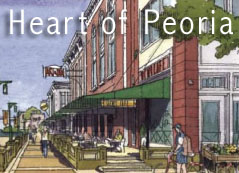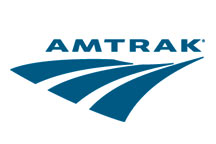 If you missed last night’s meeting at the Gateway building (you can read about that meeting in the Journal Star today) and you want to know more about the proposed form-based codes for the Heart of Peoria, watch the City Council meeting tonight at 6:15 on Insight cable channel 22 (or head downtown to see it live on the fourth floor of City Hall). Ferrell-Madden and Associates will be presenting the new “Land Development Code,” as it’s called now, to the council early in the evening’s proceedings.
If you missed last night’s meeting at the Gateway building (you can read about that meeting in the Journal Star today) and you want to know more about the proposed form-based codes for the Heart of Peoria, watch the City Council meeting tonight at 6:15 on Insight cable channel 22 (or head downtown to see it live on the fourth floor of City Hall). Ferrell-Madden and Associates will be presenting the new “Land Development Code,” as it’s called now, to the council early in the evening’s proceedings.
The whole idea of this new code is to recognize that zoning needs in the older, urban part of town are different than zoning needs in the suburban part of town. Right now, we just have one zoning ordinance that applies to the whole city, and it’s based on suburban standards (e.g., strictly separating residential and commercial uses of land, extensive parking requirements, fast arterial streets, large setbacks for buildings, etc.).
That kind of zoning just doesn’t work for the older part of town where density is so high that they often can’t meet the extensive parking requirements without tearing down buildings to put in parking decks or large surface lots, where buildings and neighborhoods were designed for mixed uses of land (corner grocery stores, residential apartments above commercial shops, etc.), and where businesses are supposed to front the street, coming right up to the sidewalk.
In addition to these general provisions for maintaining the character of older neighborhoods and commercial districts, the Land Development Code also includes additional, highly-detailed provisions for four specific “form districts”: the Sheridan-Loucks Triangle, the Prospect Road Corridor, the West Main Street Corridor (Renaissance Park), and the Warehouse District. These provisions are tailored to these individual areas, taking into account their unique features and needs. The time it takes to develop such a detailed code for these areas makes it impossible to do this for all 8,000 acres of the Heart of Peoria all at once; but more form districts will be added over time.
As mentioned before, this is not coming before the council for adoption tonight. There will be an intense public hearing process over the next month or so, and hopefully the code, with revisions, will come before the council for adoption sometime in December.

 Peoria’s Mayor Jim Ardis will be pressing for rail service to come back to Peoria when he meets with Dick Durbin at a meeting in Champaign, the
Peoria’s Mayor Jim Ardis will be pressing for rail service to come back to Peoria when he meets with Dick Durbin at a meeting in Champaign, the